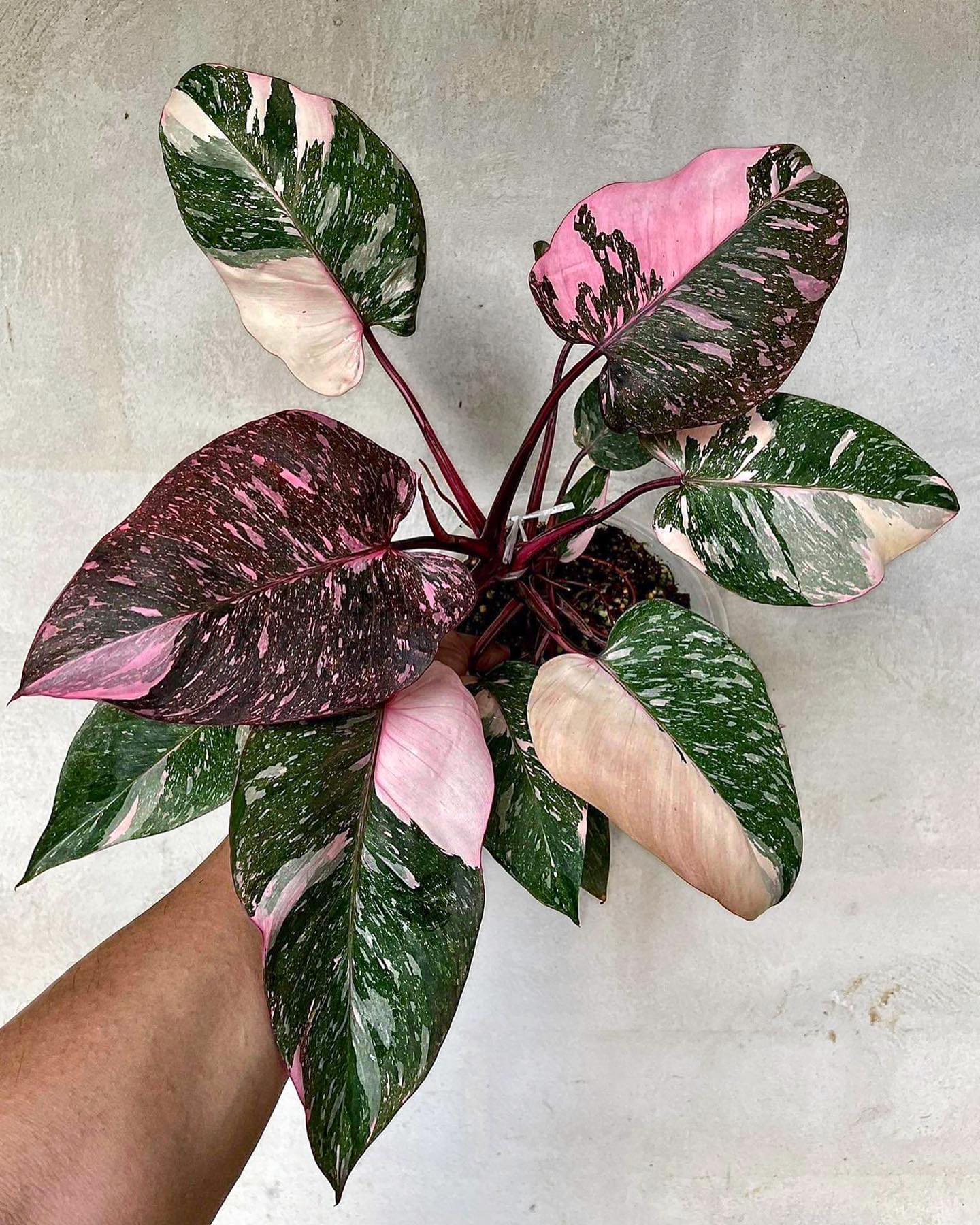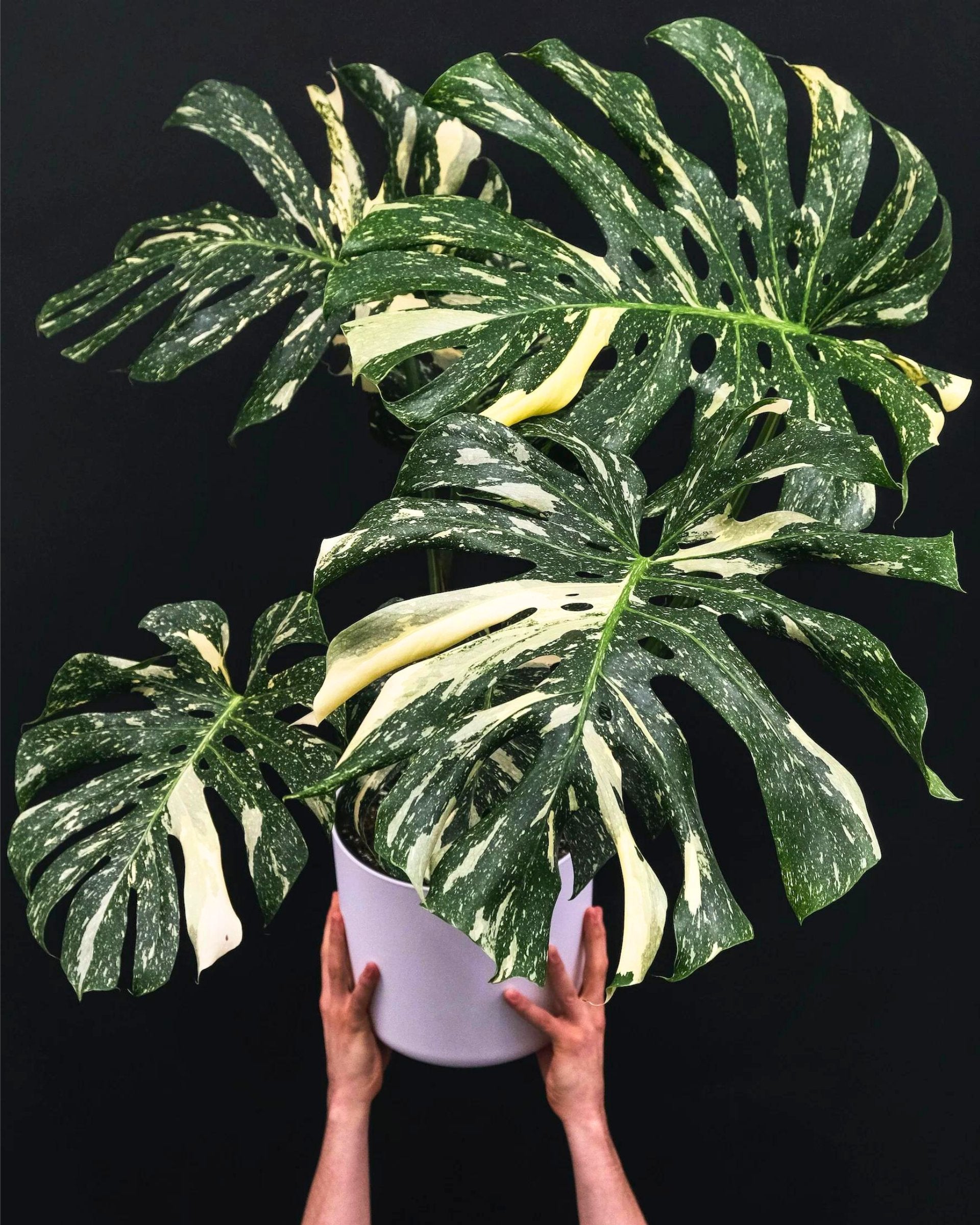String of Pearls (String of Beads Succulent)
- Regular price
- $35.00
- Sale price
- $35.00
- Regular price
Description
String of Pearls Succulent Plant
Senecio Rowleyanus - commonly known as string of pearls or string of beads, is named after British botanist Gordon Rowley, the species was recently moved from huge genus Senecio (which contains not just succulents but also common weeds like groundsel) into the new genus Curio.
String of Beads is an evergreen perennial and is in the daisy family (Asteraceae) which is native to dry areas of the eastern Cape of South Africa. There is also a variegated form with wide white stripes and sections along it's foliage.
String of Pearls Care Guide:
Light:
As a succulent, String of pearls plants flourish on a combination of direct and indirect sunlight. You'll want to give your String of pearls between six and eight hours a day depending on how much you want to "stress" them and change their color.
They're best when kept in direct sunlight during the less harsh morning hours, then when the sun moves, indirect light or partial shade during the stronger afternoon hours.
Temperature / Humidity:
Your String of Pearls plant will thrive in warm temperatures above 70 degrees Fahrenheit from spring through fall as it will mimic it's natural environment. It grows best with winter temperatures, ranging from 50 to 60 degrees Fahrenheit. This plant prefers low humidity, so avoid placing it in any already-humid areas of your home, like a kitchen or bathroom.
Watering:
If you notice your succulent's bead leaves becoming wrinkly, it's a good indication that your String of Pearls needs more water. Depending on your environment, you will likely need to water your plant once every 7 to 14 days.
This is dependent on environment such as if you're in a hotter climate, have your string of beads outdoors during the summer, or in porous terracotta pot, you might need water closer to every seven days. Start with this and test out what works best with your specific conditions.
Soil:
Sandy or succulent potting soil will work for your string of pearls plant. Alternatively, you can use a 3-to-1 mixture of potting soil with sharp sand, pumice and/or perlite. Succulents in pots need soil that is fast draining, chunky, and well aerated. Plant them in a container that boasts ample drainage holes at its base. Another tip is that clay or terracotta pots can also help absorb excess moisture from the soil.
Flowering:
Generally, the String of Pearls has difficulty flowering indoors, but when it does it will bloom in the summer. Your plant will produce white compound daisy-like discoid flowers with long red stamens and bright yellow anthers on 1 inch long peduncles. The small flowers are very fragrant, with a sweet and spicy, cinnamon-like scent.
Fertilization:
You can use a general succulent fertilizer or a cactus fertilizer for your String of Pearls. Just be sure to dilute the fertilizer to half-strength before using it on your plant. A good schedule to follow is to fertilize your String of Pearls once at the beginning of spring and once at the beginning of summer.
Where To Buy String of Pearls Plant?
You can buy your String of Pearls Plant at our Plant Vault website or in person through a showroom appointment located in Encinitas, California.
String of Pearls Specifications:
- In 6" Nursery Pot
- Very full top foliage
- Long trailing string of beads vines
Weather Conditions
Please be mindful of the weather conditions in your area, as rare plants can be particularly vulnerable to cold temperatures especially during shipping. If the temperature drops below 50 degrees Fahrenheit in your location, we strongly advisepurchasing Winter Shipping Protection or consider purchasing the plant when weather is more suitable.
Click Here to add Winter Shipping Protection to your order.
Extreme cold can cause damage to plants during shipping, potentially leading to wilted or damaged foliage, root rot, or even death. While we take every precaution to carefully package and protect your plants during transit, we cannot guarantee their condition if they are exposed to freezing temperatures during delivery.
We recommend monitoring local weather forecasts closely and timing your plant orders accordingly. Additionally, consider providing a secure and sheltered location for package delivery to minimize exposure to cold temperatures upon arrival.
Please understand that while we strive to deliver the highest quality plants, factors beyond our control, such as inclement weather, may impact their condition during shipping.
Thank you for your understanding and cooperation in ensuring the safe arrival of your rare plants.
Shipping Information
Orders ship within 4-7 business days.
Please advise, shipping times can vary due to processing times and size of order.




